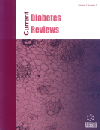
Full text loading...
We use cookies to track usage and preferences.I Understand
Diabetic Retinopathy is a vascular microvascular disease also called diabetic eye disease caused by microangiopathy leading to progressive damage of the retina and blindness. The uncontrolled blood glycemic level or sugar level results in diabetic retinopathy.
There are two stages of diabetic retinopathy: proliferative diabetic retinopathy and non-proliferative diabetic retinopathy. Symptoms of diabetic retinopathy often have no early warning signs, even muscular edema, which can cause rapid vision loss. Macular edema in which the blood vessels leak can also occur at any stage of diabetic retinopathy. Symptoms are darkened or distorted images and blurred vision that are not the same in both eyes. This review study primarily discusses the pathophysiology, genetics, and ALR, AGEs, VEGF, EPO, and eNOS involved in diabetic retinopathy.
The longer a person has diabetes, the higher their risk of developing some ocular problems. During pregnancy, diabetic retinopathy may also be a problem for women with diabetes. NIH are recommends that all pregnant women with diabetes have an overall eye examination. Diagnosis of diabetic retinopathy is made during an eye examination that comprises ophthalmoscopy or fundus photography, and glow-in angiography for Fundus. Here, we present a review of the current insights into pathophysiology in diabetic retinopathy, as well as clinical treatments for diabetic retinopathy patients. Novel laboratory findings and related clinical trials are also analysed.

Article metrics loading...

Full text loading...
References


Data & Media loading...

